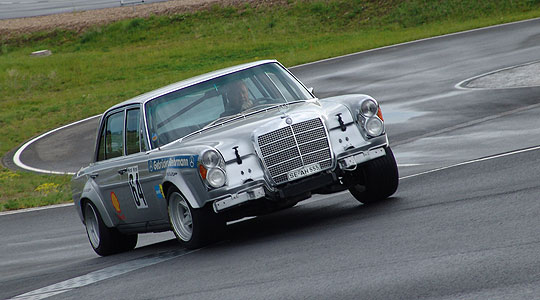
At the end of the 1960s, the Mercedes-Benz 300 SEL 6.3 made headlines around the world. Here was a down-to-earth saloon to rival the performance of such sports cars as the Porsche 911S, Jaguar E-type 4.2 and Maserati Mistral. Classic Driver Germany tested one of the last of these super-saloons – an even more powerful machine, uprated for competition.
Long, broad and flat, the Mercedes-Benz 300 SEL 6.3 – this one bored out to 6.9 litres – sits on the wet bitumen. In the heavy rain, it looks like a stranded whale. The tall radiator rises up steeply into the wind. Below, a separate oil-cooler for the automatic transmission seems almost to touch the Tarmac, so low does the body lie.
Some 40 years ago, this Mercedes emerged in a new era of style. Gone were the playful tail-fins of the past, simplicity replacing the now outdated theme of baroque opulence. When it came to the engine, however, the Stuttgart engineers accepted American methods of delivering horsepower, choosing a 6.3-litre V8 based on the design of Daimler-Benz engineer Erich Waxenberger.
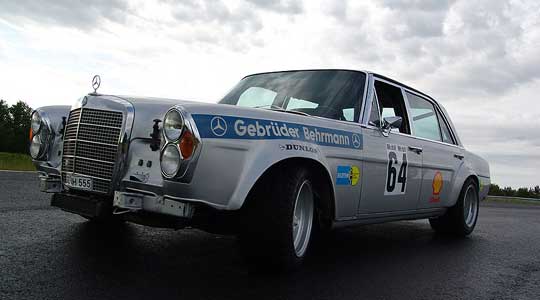
The saloon was finally launched in December 1967, boasting 250HP at 4,000rpm and torque of 500Nm at just 2,800rpm. It was acclaimed by the international press for its 0-62mph time of 6.5 seconds (faster than a Porsche 911S); and top speed of 225km/h (more than a match for E-type 4.2 or Mistral).
Back to the present, and I settle into what is probably the fastest saloon of its day. Instead of the leather armchair of a standard six-three, I’m held securely by a bucket seat. In my hands I hold a three-spoke, leather-covered steering wheel, while the rest of the interior is complete with its luxurious trim, including the shining wood inserts in the instrument panel. “We removed the electric window mechanism for reasons of weight,” explains owner Klaus Behrmann, “and just left the switches in the console.”
The wheel-arches house high-strength and light magnesium 10K15 alloys at the front and 12K15 rims at the rear, clad in Dunlop Racing tyres. They wear fast, these tyres, with the tremendous load put on them. In 1971, Behrmann won eight German events in this car, beating competitors including Alfa GTA, Ford Capri, Mustang, Opel Commodore and BMW CS Coupés.
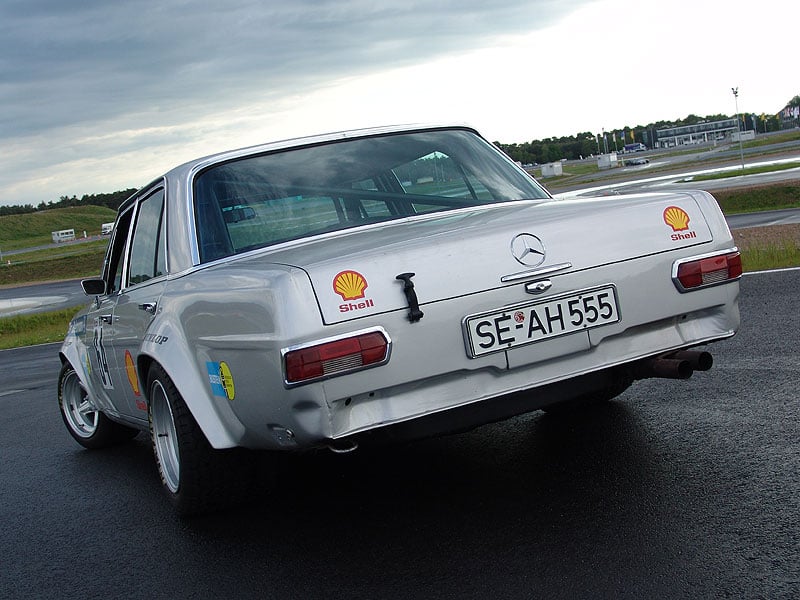
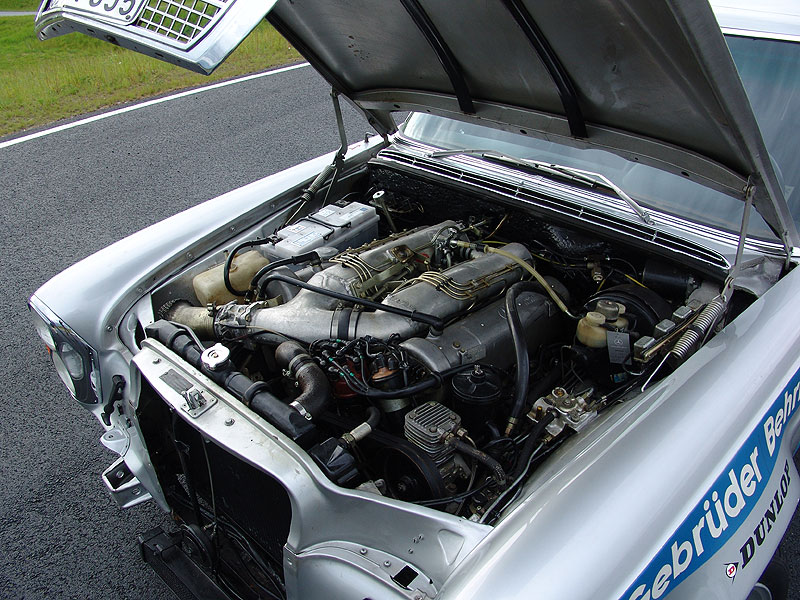
I seize the inconspicuous key, its understatement typical of this car, and push it into the chrome-plated ignition. An easy twist to the right. Position one. The fuel tank needle jumps out of the reserve position. I turn the ignition key to position two, and a further twist to the right sees the monster awake.
The Bosch pump circulates the fuel, the injection provides an immediate result and 16 valves take orders from the two camshafts. There is a brief vibration from the cylinder banks and then the oil pressure indicators ascend the scale, the exhaust gases exiting the twin pipes as loudly as rifle fire. Klaus Behrmann tells me, "On the 11th and 12th of September 1971, we started at two-oh-six hours on the Paul Ricard circuit at Le Castellet, “side by side with AMG. We completed the first run in fourth place, ahead of the AMG team. But in the second run a bearing failure destroyed our dreams.” The AMG failed, too. The following year, the entry requirements changed and Behrmann retired the super-saloon from competition.
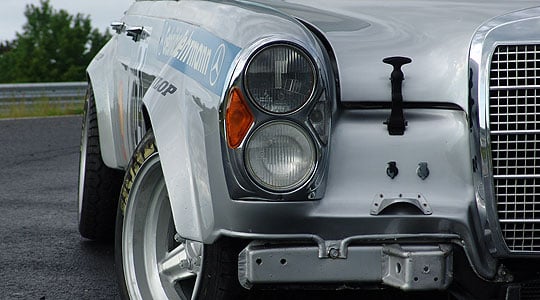
Today, however, we are letting it stretch its legs. I push the selector lever of the automatic gearbox – slot four. I carefully touch the throttle with my right foot – but not carefully enough, as the long car leaps five metres forward. The automatic gearbox takes up the torque and sends drive to the rear axle. The combination of wheels and tyres is similar to Formula racing cars of earlier epochs. The spring travel of the two axles is minimal, and the body hardly tilts under rapid changes in load.
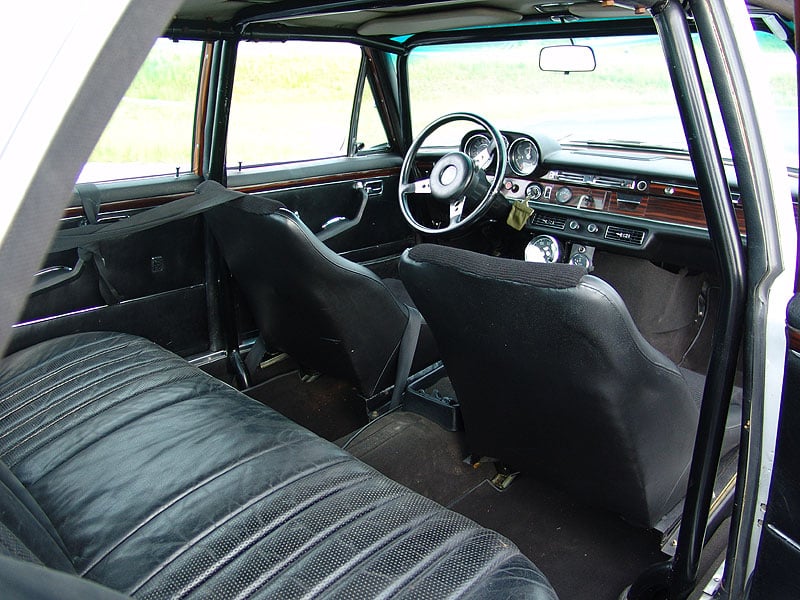
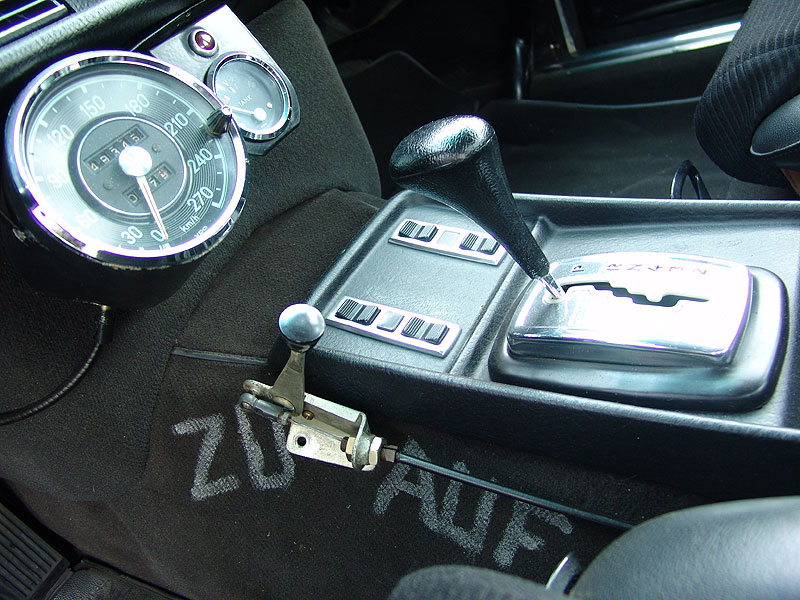
The substantial power of 360HP, without modern electronic aids, demands a delicate feel in the right foot, particularly in fast bends, although the battleship holds its line well. “On a long straight the car will reach 280km/h,” says Behrmann. “That’s 55km/h more than the factory specification for the standard SEL.” Meanwhile the standard cars managed 0-62mph in 6.5 seconds and we have an extra 110HP on board. We can only guess what the actual performance figures are, but it feels like we’re in the middle of a thunderstorm…
Editor's Note: This is an abbreviated version of a two-part German language feature with many more photographs run on our German magazine pages. For full access to these please click HERE for Part One and HERE for Part Two.
Text: Mathias Paulokat
Photos: Mathias Paulokat - Strictly Copyright
ClassicInside - The Classic Driver Newsletter
Free Subscription!







